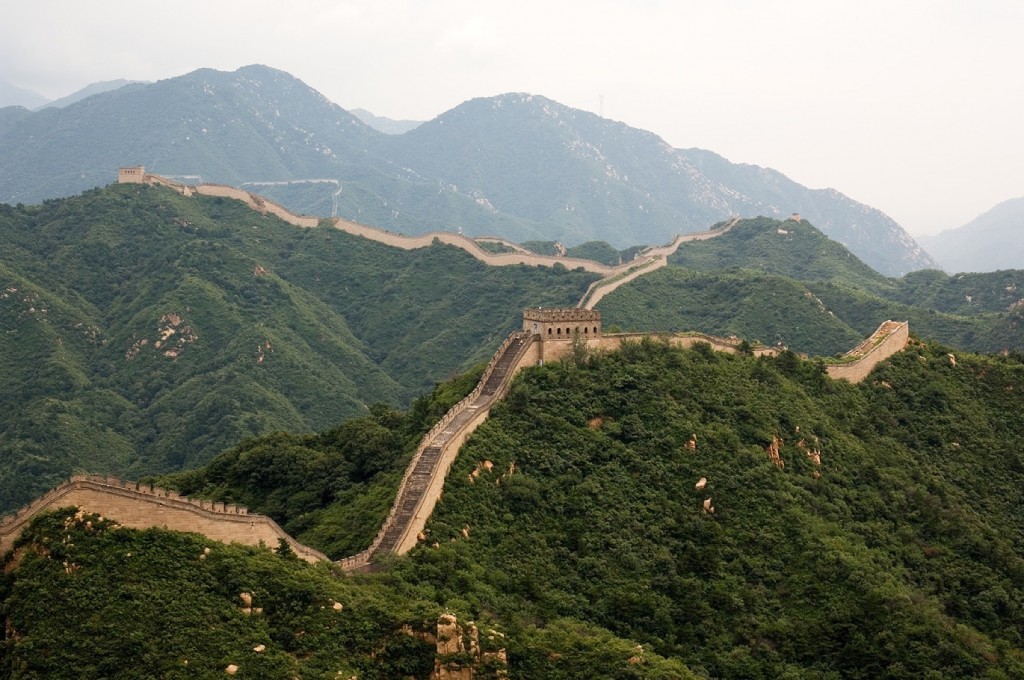(an update from Sam Churchill - economist Magellan Financial Group)
 China’s extraordinary economic growth of recent decades has been driven by the mass mobilisation of rural labour, huge capital investment, low-cost manufacturing exports and the acquisition of foreign technology. However, in recent years, a number of imbalances have been developing that pose risks to the country’s stability. Since the GFC, China has experienced an unprecedented expansion of credit, from around 140% of GDP in 2008 to over 200% of GDP in 2014. Meanwhile, it has experienced a property construction boom that has shifted its housing market from structural undersupply to oversupply, with millions of properties now lying vacant.
China’s extraordinary economic growth of recent decades has been driven by the mass mobilisation of rural labour, huge capital investment, low-cost manufacturing exports and the acquisition of foreign technology. However, in recent years, a number of imbalances have been developing that pose risks to the country’s stability. Since the GFC, China has experienced an unprecedented expansion of credit, from around 140% of GDP in 2008 to over 200% of GDP in 2014. Meanwhile, it has experienced a property construction boom that has shifted its housing market from structural undersupply to oversupply, with millions of properties now lying vacant.
Credit growth
The Chinese financial system comprises a traditional banking system of state-controlled banks and a shadow banking system made up of investors, borrowers and unregulated financial intermediaries. The traditional system is highly regulated and credit creation within it is tightly controlled by the government. However, rapid credit creation in the loosely-regulated shadow banking system is of particular concern. Shadow lending has grown to approximately 70% of GDP and now accounts for most of China’s new credit, which is expanding at a rate of around 15% of GDP per year.
Credit expansion has been concentrated in 3 main areas:
- Corporate borrowing makes up the majority of new credit creation, particularly by state-owned enterprises. China’s corporate sector is among the most heavily indebted in the world, with corporate credit having risen from around 90% of GDP in 2008 to around 125% of GDP in 2013.
. - Household borrowing remains low compared to other countries, but the pace of recent growth has been quite strong. Household debt, most of which is mortgage-related, has risen from around 11% of GDP in 2008 to around 20% in 2013. The ratio of household debt to disposable income has doubled between 2008 and 2013.
. - Provincial government borrowing makes up a large proportion of new government borrowing which has been undertaken to fund construction of infrastructure, property and local enterprises. Provincial government debt has risen from around 27% of GDP in 2010 to around 33% in 2013, according to a recent audit.
China’s shadow banking system is comprised of opaque financial instruments, such as trusts and Wealth Management Products (WMPs), sold as deposit-like products to investors hoping for higher rates of return than are available in a Chinese bank account. These products provide equity and debt capital to Chinese corporates, local government financing vehicles (LGFVs) or other financial instruments on unknown terms. Investors are generally unaware of the underlying exposures. Most WMPs have short-term maturities, which could lead to a systemic liquidity problem in the event of defaults and an investor run.
The extent of moral hazard in China’s financial system adds to such concerns, with many investors relying on an implicit guarantee from the central government in the event of counterparty default.
A recent run on a small rural Chinese bank demonstrates the vulnerability of the financial system to changing investor sentiment, as well as the likely response of the government. In this case the PBOC (People’s Bank of China) quickly came to the rescue to restore order to the local financial system.
Not all credit booms end in economic crisis. According to a 2012 IMF paper around 23% of credit booms are followed by a financial crisis and economic underperformance. China is no stranger to banking crises but these have been typically well managed. In the late 1990s, non-performing loans (NPLs) at Chinese financial institutions rose to well over 20% before government-backed Asset Management Companies took over the debt to recapitalise the banking system. Reported NPLs of Chinese banks are currently low, but are likely understated.
China’s domestic debt levels significantly exceed those of its emerging markets peers, but generally remain below the levels of advanced economies. However, the pace of recent credit growth is of greater concern as it may reflect the misallocation of capital towards unproductive investments, low credit standards, and generally unsustainable spending growth. A material portion of recent credit growth may be related to the rollover of existing debts rather than real economic activity.
Property market
Following the privatisation of the housing market in the late 1990s, China has rapidly become a nation of property owners, with approximately 80-90% of households owning at least one property. At the same time property development has become a major industry. In 2007, the country was constructing around 1.5 billion square metres of gross residential floor space per year (or 15 million housing units) to support urbanisation, replace demolished old housing stock and to meet the upgrading and investment needs of Chinese households. During the GFC property market restrictions were loosened considerably, driving up prices and increasing speculative investment. Growth in land sales by local governments and construction by developers followed suit, and the annual residential construction rate reached 2 billion square metres in 2013. This rate of construction equates to at least several million more units of housing than new households being formed, a story analogous to recent construction booms in the United States, Spain and Ireland.
Most of China’s excess housing supply is thought to be vacant stock held by private investors, with the remainder sitting on the books of real estate developers, many of whom are highly indebted. There is also a serious geographic mismatch between housing supply and demand. Tier 1 cities such as Beijing and Shanghai generally suffer from housing shortages, while Tier 3 and 4 cities hold most of the excess supply. Another problem is the lack of affordable housing available for migrant workers who account for most of new urban household formation.
The risk is that the build-up of unoccupied properties held by developers will result in a major contraction of construction activity. Developers that have borrowed from shadow banks may default if their properties remain unoccupied or unsold. A fire sale could lead to large falls in prices and result in huge capital losses, rendering developers insolvent. Furthermore, investors may choose to dump some or all of their property holdings to mitigate losses, exacerbating any downturn. Interest rate liberalisation, the opening up of capital markets and availability of alternative investments (e.g. WMPs) could also undermine faith in the property market. Real estate accounts for around half of household wealth in China so there could be meaningful wealth effects on consumption; however the threat of negative equity for households appears low given limited mortgage debt.
What does this mean for markets?
Although there are a number of reasons to be optimistic about China’s long-term economic future, the short-to-medium term challenges are considerable.
To run down current excess residential property supply it is possible that China’s residential property construction activity could fall by as much as 50%. With housing construction representing around 9% of GDP this would cause a major slowdown in the economy and perhaps even a recession. There are signs that the rate of urbanisation may be slowing, and the Chinese leadership will be hoping that the housing adjustment can be managed gradually, alongside offsetting economic stimulus measures and orderly defaults. A ramp up in social housing initiatives is likely to form part of the solution, while helping to maintain positive sentiment.
China’s ongoing push to reign in excessive credit growth and liberalise financial markets risks creating a credit event somewhere in the shadow banking system. This could be linked to the property market or LGFVs. Although a major growth slowdown was avoided during China’s financial crisis of the late 1990s, the shadow banking system may prove a lot more difficult to control, especially since products such as WMPs are complex and involve millions of retail investors. Recent defaults by trust products and corporate bonds, as well as changes to lending regulations, are prime examples of such moves.
The Chinese government has a number of tools it can use to deal with any crisis, with combined central and provincial government debt relatively low at 56% of GDP. It can stimulate the economy or nationalise a large share of the debt if systemic problems arise, as the debt is domestically held, RMB denominated and issuance is fully controlled by the government itself. Notwithstanding recent moves to internationalise the RMB and open the country’s capital account, China’s economy remains relatively closed and the financial system remains fully funded by domestic deposit holders. A large domestic debt problem is more manageable than a large external debt problem, as the economy is less vulnerable to capital flight. Furthermore, the country’s huge foreign exchange reserves and current account surplus make it highly resilient to external financial shocks.
It is possible that we could see a larger-than-expected slowdown in China’s economy in the years ahead. This would have major effects on countries to which it has trade and financial links. Commodity exporters such as Australia and Brazil would be particularly vulnerable, as would emerging economies in Asia, Japan and Germany. Financial links between Chinese and Hong Kong or Singaporean banks could be channels for the international transmission of a Chinese financial shock. Furthermore, capital repatriation by Chinese investors could hit property markets in Canada, Australia, the UK and Hong Kong, while any move by China to sell its foreign currency reserve holdings could also lead to global asset price volatility, including a spike in US Treasury yields.
China is entering a period of heightened risk and uncertainty as it attempts to address some key systemic risks. As a major driver of global growth, China’s stability and growth performance will bear very close watching in the years ahead.
Sam Churchill is an Economist at Magellan Asset Management
